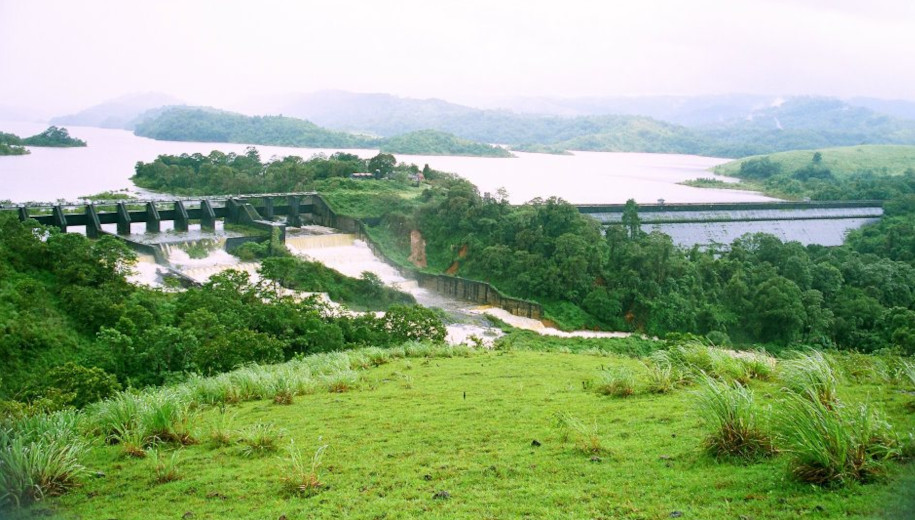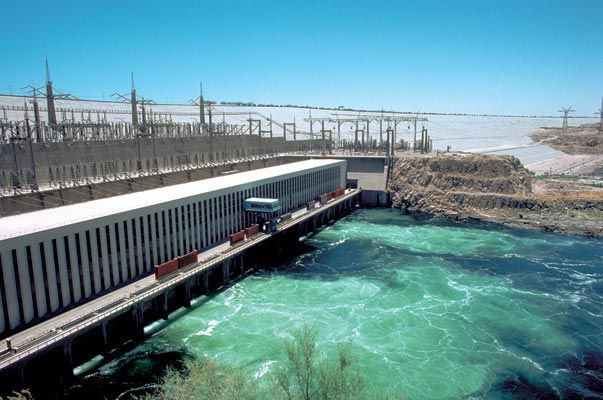08/02/21
Ageing dams are ‘ticking time bombs’

By: Ranjit Devraj
Send to a friend
The details you provide on this page will not be used to send unsolicited email, and will not be sold to a 3rd party. See privacy policy.
[NEW DELHI] Perched high up in the Western Ghats, adjacent to Kerala’s famed Periyar wildlife sanctuary, is a 126-year-old dam that has dangerously outlived the 50 years of life intended for it by colonial British engineers.
N.K. Premachandran, a member of parliament from Kerala, describes the 53.6 metre-high Mullaperiyar dam on the Periyar river as “a ticking timebomb waiting to explode, not only because of its antiquity but also because it is located on an acknowledged seismic zone”.
“As Kerala’s water resources minister (from 2006 to 2011), I commissioned studies on the safety of the dam by the Indian Institute of Technology (IIT) at Roorkee, which specialises in dams and irrigation, and IIT-Delhi. Both institutes had deemed Mullaperiyar fit to be decommissioned but the issue got bogged down in political wrangling and litigation in the Supreme Court,” Premachandran tells SciDev.Net.

Cross-section of the Mullaperiyar Dam. Image credit: Captain (CC BY-SA 3.0).
Premachandran is happy to see Mullaperiyar listed among the world’s big dams that need to be decommissioned in a report released 22 January by the UN University – Institute for Water, Environment and Health (UNU-INWEH). “Let’s hope the UN study will encourage authorities, including the Supreme Court, to decide early to decommission this dam that threatens the lives of millions,” he adds.
“Dams as a means of water security are passé, as pointed out by the UN-sponsored study,”
C.P. Rajendran, National Institute of Advanced Studies
Duminda Perera, an author of the study and an expert on water resources and water-related disasters, says: “We selected Mullaperiyar dam as a good example of an aged but still functioning dam in a seismically active area amidst structural flaws, political stresses, and environmental issues —as recorded in published literature.”
Opposition to decommissioning
Decommissioning Mullaperiyar is strongly opposed by Tamil Nadu state, which inherited a lease agreement between the former princely state of Travancore (now Kerala) and the British government. The lease allows Tamil Nadu to operate the dam and divert 640 million cubic metres of water annually for irrigation and power generation through a tunnel bored into the Western Ghat mountains that form a wall between the two states.
But Mullaperiyar ticks all the boxes that the UNU-INWEH study identifies for decommissioning — public safety, growing maintenance costs, reservoir sedimentation and environmental restoration. Large dams, even if structurally sound, are regarded as ‘high hazard’ infrastructure because of the potential for massive loss of human lives, livelihoods and destruction in the event of failure, the study said.
“Our study discusses the dam ageing issue globally, bringing the topic to the surface and hoping to get the national level policymakers’ attention,” Perera tells SciDev.Net. “The decommissioning decision should be taken after a careful and in-depth analysis of a dam and its links with the economy and society.”
“There are many strong advocates for increasing safety-related investment in dams. For example, the World Bank, in just the last few years, has invested over US$1 billion in a dam rehabilitation improvement programme in India,” says Perera.
Ageing dams globally
China, the US and India top the list of countries with a significant number of large dams. China alone hosts 40 per cent of the of the world’s large dams (numbering 23,841), their average age being 45 years. According to official records, India has 209 dams that are over 100 years old, built when design practices and safety were far below current norms.
Africa has far fewer large dams than other continents, though there are notable structures like the Akosombo Dam in Ghana, Kariba Dam in Zambia and Zimbabwe, and Egypt’s Aswan Dam. While Africa increasingly relies on hydropower, the average age of Africa’s dams is less than 50 years, the study said.



Aswan Dam in Egypt. Image credit: Orlova-tpe (CC BY-SA 3.0).
Latin America’s large dams are also yet to face the widespread ageing seen in other regions, although the average age in some functional categories is close to 50 years. More than half of all large dams in South America are found in Brazil, with a handful over 50 years.
The study lists well-documented cases of failure of dams aged between 50 and 100 years. These include the Panjshir Valley Dam (Afghanistan, 2018), Ivanovo Dam (Bulgaria, 2012), Situ Gintung Dam (Indonesia, 2009) and Kantale Dam (Sri Lanka, 1986).
Whether from excessive seepage, cracking, overtopping, or structural flaws, dam failures are frequently the result of poor design or construction, lack of maintenance, or operational mismanagement, the study said.
Experts in India cite the catastrophic 1979 failure of the Machchu II Dam in Gujarat state, 20 years after it was commissioned, as an example of mismanagement. Following heavy rains, the dam, which had filled up four times its capacity, collapsed, resulting in the deaths of more than 15,000 people and destruction of the low-lying industrial town of Morbi, five kilometres downstream.
The Machchu II Dam collapse figures among the world’s worst dam disasters and is second only to China’s 1975 Banqiao dam failure which is estimated to have taken the lives of 240,000 residents of Henan province. China never released official figures of casualties or damage.
Unrealised risks
C.P. Rajendran, a top geologist at India’s National Institute of Advanced Studies and member of an expert committee appointed by the Kerala government to study the stability of the Mullaperiyar dam, says that the “lower bound of life-expectancy being 50 years combined with siltation problems means that most of India’s dams are reaching the end of functional life”.
Additionally, says Rajendran, India and China have fast-forwarded their dam-building activities, ignoring the ecological and seismological vulnerability of the Himalayan regions, especially in the backdrop of climate change that accentuates glacier melting and the flood situations. “Dams as a means of water security are passé, as pointed out by the UN-sponsored study.”
The dangers of building dams in ecologically sensitive areas were highlighted on Sunday (7 February) when a Himalayan glacier fell into the Dhauli Ganga river in the Uttarakhand region. It triggered huge floods, swept away a small dam and damaged a bigger one downstream leaving a trail of destruction. More than 100 people are missing and feared dead after being caught in the torrent, including more than 50 workers of the smaller dam.
For the Mullaperiyar, IIT- Roorkee estimated in its report to Premachandran that it would fail if an earthquake of 6.5 magnitude occurs in a radius of 16 kilometres when the water level in the dam is at 41 meters. According to the UN study, such an event would endanger the lives of 3.5 million people in Kerala.
“By 2050, most people on Earth will live downstream of tens of thousands of large dams built in the 20th century, many of them already operating at or beyond their design life,” the study said.
This piece was produced by SciDev.Net’s Asia & Pacific desk.














